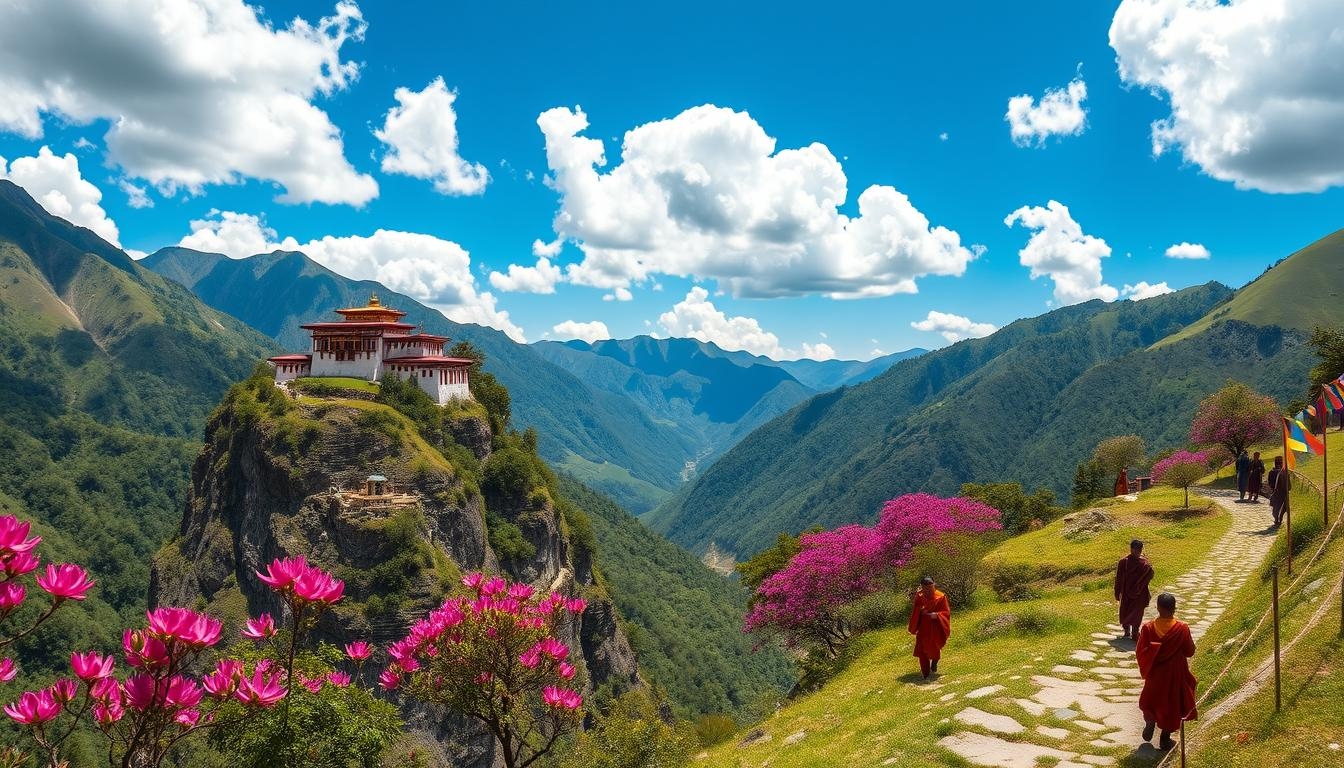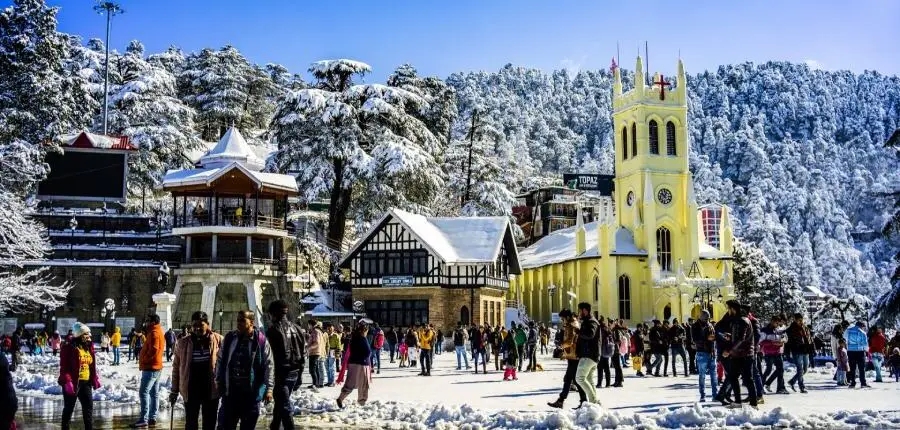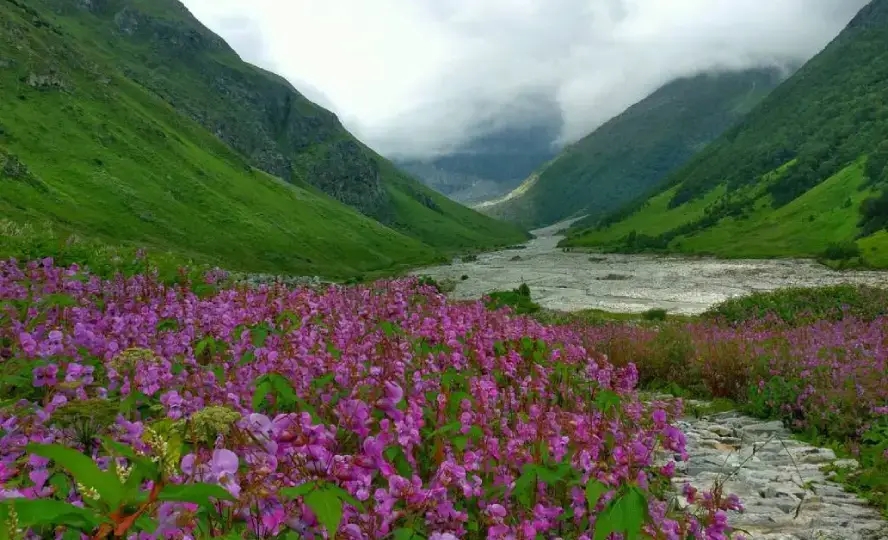Sikkim, nestled in the Eastern Himalayas, is a paradise for nature lovers, adventure enthusiasts, and those seeking peace in the lap of nature. Here are some of the best places to explore in Sikkim.With its lush greenery, cascading waterfalls, and snow-capped peaks, Sikkim offers breathtaking landscapes. Sikkim in its frozen gown of white snows is a place to be in winters and is also a summer retreat when the northern plains reel under the scorching rays of summer sun. Some of the most amazing places to explore in Sikkim are
1.Gangtok
The capital city of Sikkim, Gangtok, is a vibrant hill station known for its scenic beauty and Buddhist monasteries. Known for its stunning views, rich cultural heritage, and as a gateway to exploring the rest of Sikkim, it is a perfect blend of natural beauty, spirituality, and urban charm. The best time to visit Gangtok is between March to June and September to November. During these months, the weather is pleasant, and the skies are clear, offering the best views of the mountains. Gangtok is a food lover's paradise, with its restaurants offering a mix of Tibetan, Nepali, and Sikkimese cuisine. Must-try dishes include momos (dumplings), thukpa (noodle soup), and phagshapa (pork dish). The heart of Gangtok, MG Marg is a pedestrian-only boulevard lined with shops, cafes, and restaurants. It's the perfect place for a leisurely stroll, shopping for local handicrafts, and enjoying the local cuisine. The road is clean, vibrant, and often hosts cultural events and festivals. Located just 3 km from Gangtok, Enchey Monastery is one of the oldest monasteries in Sikkim known for its peaceful environment and the annual Cham dance, a masked ritual dance performed by monks.
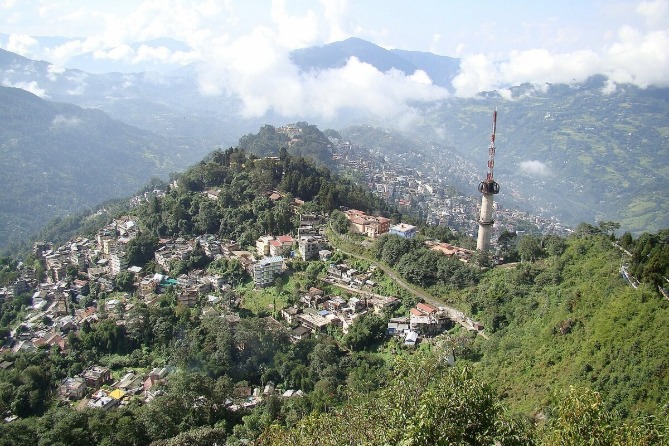
2.Tsomgo Lake
Also known as Changu lake it is located at an altitude of 12,400 feet and is one of the most popular tourist destinations in Sikkim. The lake is surrounded by snow-capped mountains, and its beauty changes with the seasons, offering a stunning view throughout the year.The pristine waters reflect the stunning panorama of the surrounding peaks, creating a picture-perfect scene. It holds spiritual significance for the local Sikkimese people and is often visited for its tranquil ambiance and pristine beauty. Visitors can also revel in the opportunity to witness migratory birds and yaks in the serene natural setting that Tsomgo Lake offers. Tsomgo Lake is not just a natural wonder but also a destination that offers a glimpse into the culture and traditions of the Sikkimese people, making it a must-visit spot for travellers seeking tranquility and a connection with nature. In spring, the area around the lake comes alive with colorful flowers, including rare species of rhododendrons and primulas Visitors can enjoy a peaceful atmosphere, take in the stunning natural beauty, and explore the nearby Yak rides and traditional food stalls.
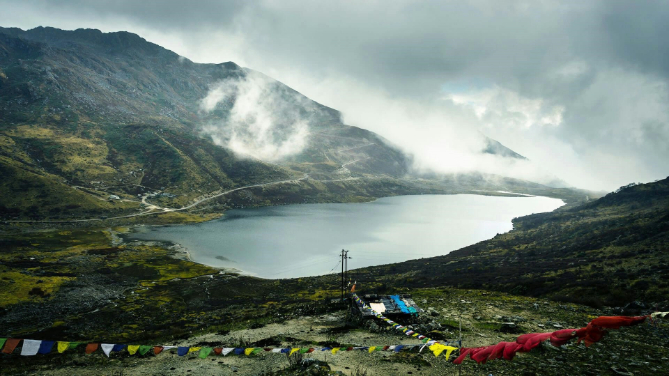
3.Nathula Pass
Located on the Indo-China border at an altitude of 14,140 feet, Nathula Pass is a historic route that offers breathtaking views of the Eastern Himalayas. The area is often covered in snow, adding to its allure.The pass unfolds a breathtaking panorama of snow-capped peaks and pristine landscapes, offering visitors a surreal experience. Renowned for its strategic importance, Nathula Pass served as a part of the ancient Silk Route and witnessed significant historical events. Due to its strategic importance and sensitive location, access to Nathula Pass is regulated, and visitors require a special permit to visit. The journey to the pass is an adventure in itself, offering a glimpse into the dramatic natural beauty and geopolitical significance of the region. Visitors to Nathula Pass can experience the stunning landscape, witness the Indo-Chinese border with its military presence, and explore the nearby war memorial dedicated to Indian soldiers. The pass is also close to other notable attractions such as Tsomgo Lake and Baba Harbhajan Singh Mandir, adding to its appeal as a destination.
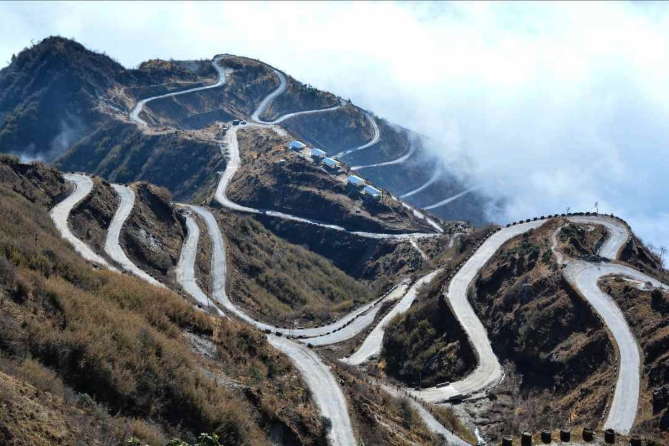
4.Gurudongmar Lake
One of the highest lakes in the world, situated at an altitude of 17,800 feet, Gurudongmar Lake is a sacred site for both Buddhists and Hindus. The turquoise waters of the lake are surrounded by snow-capped peaks, creating a surreal landscape.Gurudongmar Lake is known for its breathtaking beauty and crystal-clear blue waters, often partially frozen due to the high altitude. The barren yet awe-inspiring landscape captivates visitors, and the lake holds immense religious significance for both Buddhists and Hindus. According to legend, a portion of the lake never freezes, even in the harshest winter, due to the Guru's divine intervention, allowing locals to access fresh water year-round. he lake's crystal-clear, emerald waters contrast sharply with the rugged, barren landscape that surrounds it, creating a strikingly serene and almost surreal environment. The journey to Gurudongmar Lake is an adventure in itself, taking travellers through remote villages, verdant valleys, and the dramatic terrain of the Himalayas. Despite the challenging conditions, the breathtaking views and the tranquil atmosphere of Gurudongmar Lake make it a must-visit destination for those seeking both natural beauty and spiritual peace in the Himalayas.
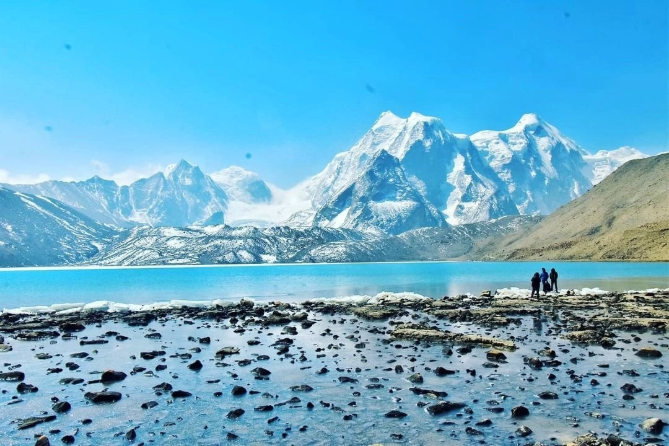
5. Pelling
Pelling is a charming hill town located in the West Sikkim district of India, known for its panoramic views of the mighty Kanchenjunga, the third-highest peak in the world. Nestled at an altitude of about 7,200 feet (2,150 meters), Pelling offers a serene retreat amidst lush green forests, cascading waterfalls, and ancient monasteries. The town is a popular destination for nature lovers, trekkers, and those seeking tranquility away from the hustle and bustle of city life. One of the main attractions in Pelling is the Pemayangtse Monastery, one of the oldest and most significant monasteries in Sikkim, which offers insight into the region's rich Buddhist heritage. Other nearby attractions include the Rabdentse Ruins, the remains of the former capital of the Kingdom of Sikkim, offering a glimpse into the region's royal history. The Singshore Bridge, one of the highest suspension bridges in Asia, provides an exhilarating experience and breathtaking views of the surrounding valleys. Pelling also serves as a base for treks to various scenic spots like the Khecheopalri Lake, a sacred lake believed to fulfill wishes, and the Sangachoeling Monastery, which is accessible by a short but rewarding trek. The town's peaceful ambiance, combined with its cultural and natural attractions, makes Pelling a must-visit destination for travellers exploring Sikkim.
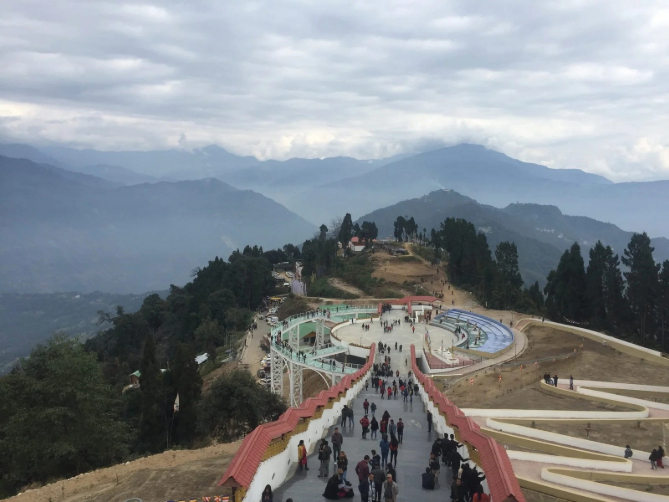
6.Yumthang Valley
Also known as the Valley of Flowers, Yumthang is famous for its vibrant meadows filled with a variety of flowers, especially during spring. The valley comes alive in spring, when the entire area is carpeted with vibrant blooms, including rhododendrons, primulas, and poppies, making it a paradise for nature lovers and photographers. The Shingba Rhododendron Sanctuary, located within the valley, is home to over 24 species of rhododendrons, making it a highlight of any visit. Yumthang is also known for its hot springs, believed to have therapeutic properties, providing a warm contrast to the cool climate of the region. The Yumthang River flows through the valley, adding to its serene and picturesque charm. A visit to Yumthang Valley is often combined with a trip to Zero Point, located further north, where the road ends and the snow-covered landscape extends as far as the eye can see. The journey to Yumthang takes travelers through scenic routes lined with lush forests, gushing rivers, and quaint villages, offering a glimpse of the unique culture and natural beauty of Sikkim. Due to its high altitude and remote location, the best time to visit Yumthang Valley is during the summer months, from April to June, when the flowers are in full bloom, or in late winter, from September to December, when the valley is covered in snow, offering a completely different but equally enchanting experience.
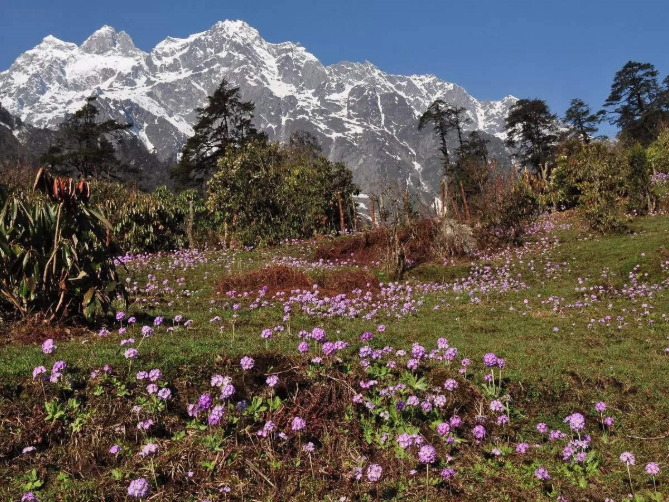
7. Lachung and Lachen
Lachung and Lachen are two picturesque mountain villages located in North Sikkim, India, known for their serene beauty, rich culture, and proximity to some of the region's most stunning natural attractions. These villages serve as gateways to several high-altitude destinations, making them popular among travellers seeking to explore the remote and pristine landscapes of the Himalayas. Lachung is situated at an altitude of approximately 8,610 feet (2,625 meters) and is renowned for its scenic beauty, with snow-capped mountains, cascading waterfalls, and apple orchards dotting the landscape. The village is known for its traditional Tibetan-style architecture and is home to the Lachung Monastery, which offers insights into the local Buddhist culture. Lachen is also the starting point for the trek to Tso Lhamo Lake, one of the highest lakes in the world, and offers opportunities for exploring the lesser-known and remote areas of North Sikkim. The village itself is a peaceful retreat, where visitors can experience the simple and traditional lifestyle of the local Bhutia community. Both Lachung and Lachen offer unique cultural experiences, with warm hospitality from the local communities. The villages are known for their festivals, traditional dances, and local cuisine, providing a glimpse into the rich heritage of Sikkim. Due to their high altitudes, both villages experience cold weather throughout the year, and the best time to visit is during the summer months, from March to June, or in the autumn, from September to December, when the weather is pleasant and the natural beauty is at its peak.
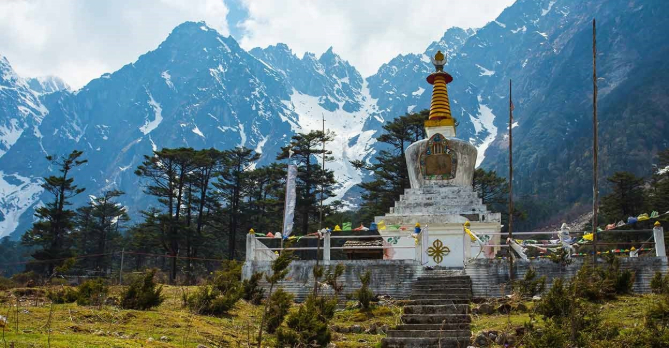
8.Yuksom
Yuksom is a historic and scenic village located in the West Sikkim district of India. Nestled at an altitude of around 5,700 feet (1,740 meters), Yuksom holds a significant place in Sikkim's history and is often referred to as the "Gateway to the Kanchenjunga." This picturesque village is surrounded by lush green forests, rolling hills, and snow-capped peaks, making it a serene destination for nature lovers, trekkers, and those interested in Sikkim's rich cultural heritage.. The village is home to several important historical sites, including the Norbugang Chorten, where the coronation of the first Chogyal took place. The stone throne, known as the Norbugang Throne, still stands as a testament to this event, surrounded by prayer flags and ancient trees. Another significant site is the Dubdi Monastery, one of the oldest monasteries in Sikkim, founded in 1701. This monastery is an important center of the Nyingma sect of Tibetan Buddhism and offers insight into the spiritual and religious history of the region. The village is surrounded by verdant forests that are part of the Kanchenjunga National Park, a UNESCO World Heritage Site. The area is rich in biodiversity, with a variety of flora and fauna, including several rare and endangered species. Yuksom's tranquil environment, with its crystal-clear streams, verdant landscapes, and fresh mountain air, provides a perfect escape for those seeking peace and solitude. It is also known for its spiritual significance, with several monasteries and religious sites that attract pilgrims and those interested in Buddhist culture. Yuksom is a place where history, culture, and nature come together, offering visitors a unique and enriching experience.
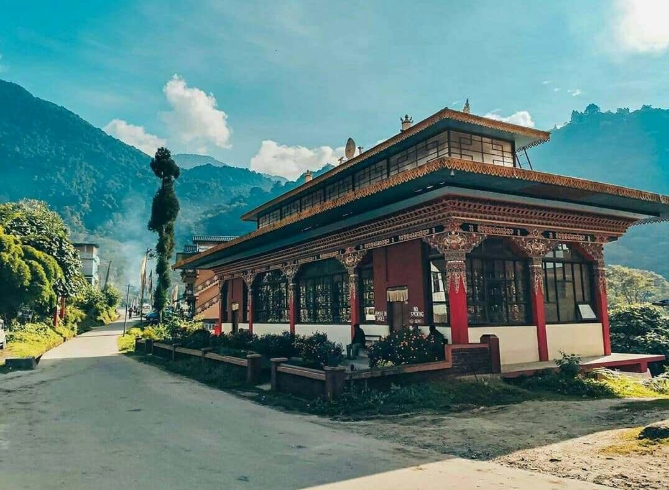
These locations offer a mix of natural beauty, cultural heritage, and adventure, making Sikkim a must-visit destination for anyone looking to explore the Himalayas.


